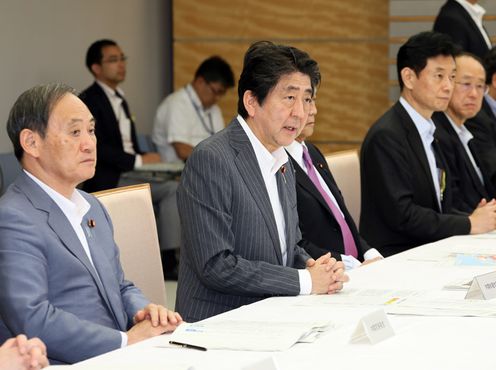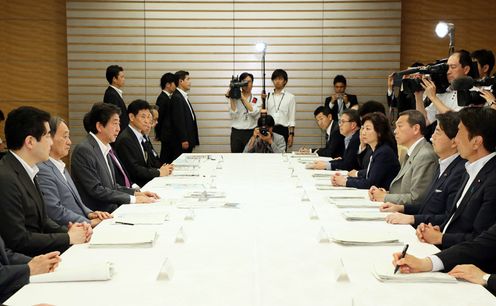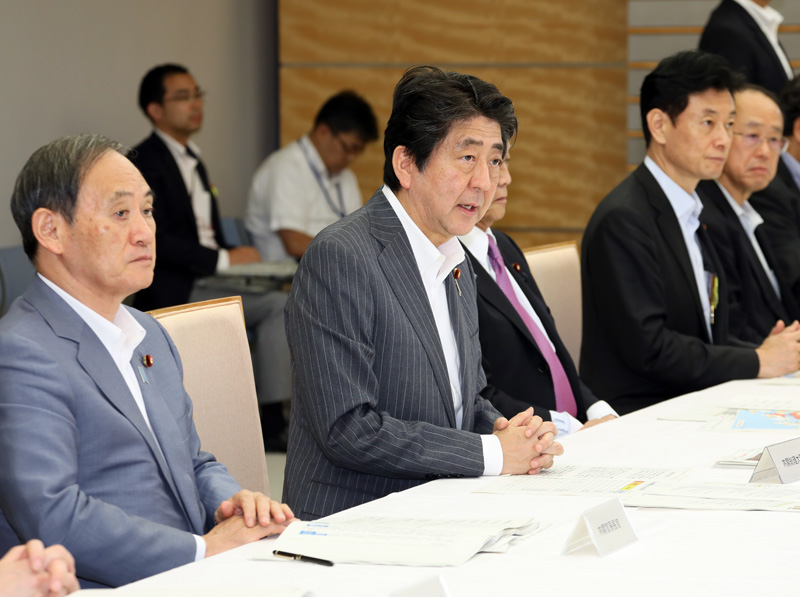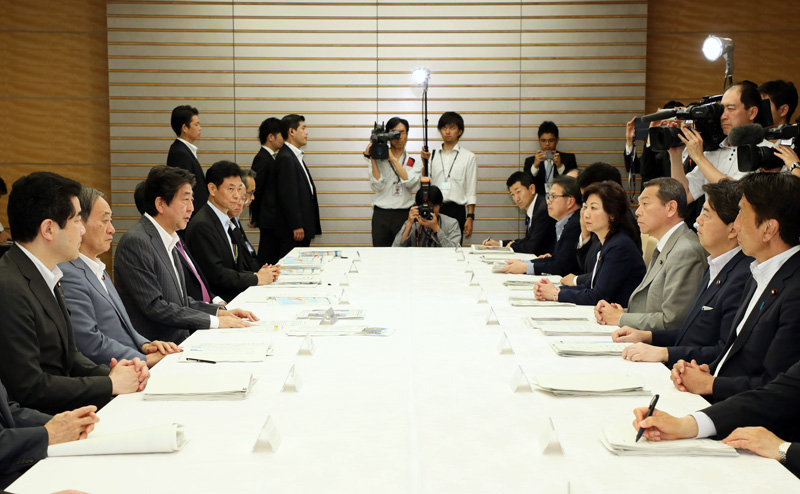Home > News > The Prime Minister in Action > July 2018 > 10th Meeting of the Emergency Response Headquarters for the Heavy Rain in July 2018
The Prime Minister in Action
10th Meeting of the Emergency Response Headquarters for the Heavy Rain in July 2018
July 19, 2018

Photograph of the Prime Minister making a statement

Photograph of the Prime Minister making a statement
[Provisional Translation]
On July 19, 2018, Prime Minister Shinzo Abe held the 10th meeting of the Emergency Response Headquarters for the Heavy Rain in July 2018 at the Prime Minister’s Office.
Based on the discussion, the Prime Minister said,
“Two weeks have passed since the disaster. Some of the affected people and volunteers have experienced heat stroke due to the prolonged heat wave. The heat is dangerous and could be life-threatening. I ask all of you to pay attention to the necessity to implement preventative measures against heat strokes, including allowing the taking of frequent breaks and consuming enough water and sodium.
In these affected areas, we are rapidly restoring infrastructure that serves as the foundation for rebuilding people’s lives and restoring ‘nariwai (occupations and livelihoods that sustain people's daily lives).’ As an example, at its peak, 262,000 homes were without running water, but as of today water supply has been restored for 237,000 homes, around 90% of the total. For those areas where water still remains cut off, we will continue to exert our fullest efforts to quickly restore this, including by enhancing support for emergency water supply systems and urgent restoration work.
As for restoration of railways and roads, National Route 2, a major east-west artery in the Chugoku Region, is expected to be fully reopened to vehicles the day after tomorrow on July 21. The section between Hiroshima and Shimo-Fukawa of the Geibi Line, which connects central Hiroshima City and the suburbs and is critical for commuters and students, is expected to reopen on July 23. We will strive to implement various measures such as arranging alternative transportation such as bus and ferry services and making urgent improvements to intersections along national routes, so as to alleviate traffic congestion, deal with transportation bottlenecks, and secure routes for commuters and students.
During the recent heavy rain, several agricultural reservoirs broke, which has caused a great deal of concern among farmers and people living in the surrounding communities. We are already carrying out emergency inspections of approximately 5,000 reservoirs in the areas affected by the recent heavy rain. Furthermore, we have also decided to carry out emergency inspections throughout the country by around the end of August this year, to verify the safety of all agricultural reservoirs, including checking for cracks and leaks, where there could be damage to homes or public facilities located downstream. As the typhoon season is approaching, we would like to implement all the measures that we can at this point in time.
Circumstances permitting, I plan to visit the affected areas in Hiroshima Prefecture the day after tomorrow on July 21. I will continue to exert every effort for implementing emergency response and recovery work in the affected areas, rebuilding the lives of those affected, and restoring ‘nariwai’ as soon as possible, from the standpoint of the people affected and following through with the front-line approach. I ask for your continued cooperation and efforts.”


